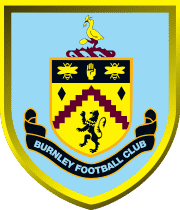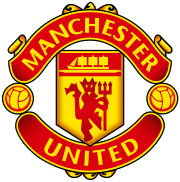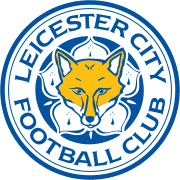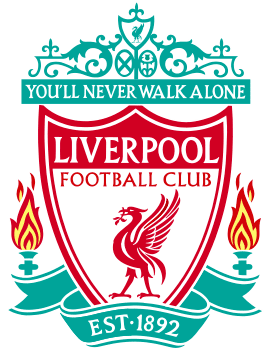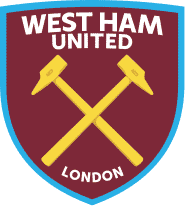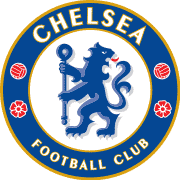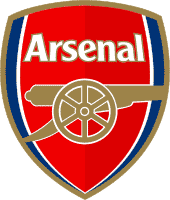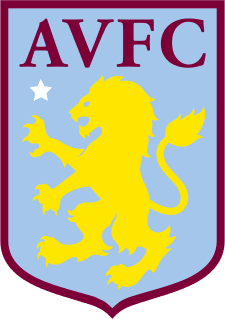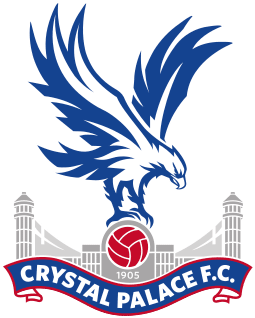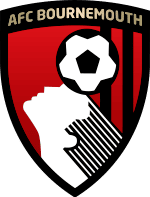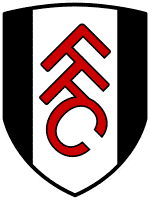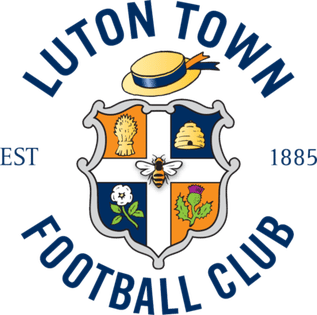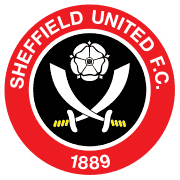Burnley FC Tryouts & Club Guide: History, Stadium, Players, and More!

Welcome!
Discover the world of soccer with fcscout.com, your go-to scout for club tryout information, club guides, player profiles, in-depth product reviews, and more. We’re dedicated to exploring and revealing the best in each domain, empowering you with knowledge to make informed choices.
Thank you for being here!
Hi, I’m Carlos! A coach, sports enthusiast, and the founder of FCScout.com.
I fell in love with the game at a very young age like many of you. I’ve been following and playing soccer for many years.
Throughout my career, I always enjoyed helping soccer players chase their dreams, which is why I started this website. I wanted to reach a larger audience outside of my local area and fcscout.com was born.
This website is a platform I will be using to update club pages on any tryouts, stadiums, players, tech, and more from clubs around the world. I also create free recruitment profiles for players looking to have that extra competitive edge when reaching out to clubs.
That’s it. That’s my pitch for you to stick around (or browse the site as you please).
This is already too much text for a “see more” drop-down button thing. If you want to reach out to me, head on over to my contact page 🙂

Burnley Football Club is an English association football club based in Burnley, Lancashire. The team currently compete in the Premier League, the top tier of English football.
Burnley FC Youth Development System
Burnley F.C. Under-23s and Academy are the youth teams of Burnley Football Club. The Under-23s currently play in the second level of reserve football in England, the Under-23 Professional Development League 2. The team mainly consists of players under the age of 23 at the club, but does occasionally include first team players. Burnley’s Under-18s currently play in the first level of academy football in England, the U18 Professional Development League.

As of this writing, Burnley FC have no trial/academy information on their official website. Please check back at a later date for updates.
Burnley FC in the community
Burnley FC IN THE COMMUNITY is the official charity of Burnely FC. They provide a plethora of support to the community with various projects. One of their most popular regarding the sport is the Burnley FC in the community Player Development Center. This program allows players to progressive from the Player Development Center program to the official Burnely FC Academy teams.

To learn more about this program and what they have to offer, please click here,
Burnley FC Recruitment Trials
At the time of this writing, there is no official publishing’s on Burnley FC trials. Please come back at a later date while we monitor this club or click here to visit their official news section.
EXPLORE MORE CLUBS!
Explore more professional clubs by continent.
Burnley FC Histroy
Burnley Football Club has been crowned the English champions three times: in 1920–21, 1959–60, and 1913–14. Additionally, the club has won the FA Cup once, in 1913–14, and the FA Charity Shield twice, in 1960, and 1973. They finished in second place in the First Division twice, in 1919–20 and again in 1961–62, and they also finished in second place in the FA Cup twice, in 1946–47 and again in 1961–62. Additionally, in the 1960–1961 season of the European Cup, the team advanced to the quarterfinals. Burnley are one of just five teams in the history of English football to have won championships in all four of the country’s professional divisions. The other four teams are Wolverhampton Wanderers, Preston North End, and Sheffield United. As a result of the team’s victory in the 1959–1960 Football League, the town of Burnley became the most populous in England to have a champion from the top division.

After relocating from their first location in Calder Vale to their current location at Turf Moor in 1883, the team began playing their home games at this venue. In honor of Aston Villa, who were reigning champions of the Football League at the time, the club chose the colors claret and blue as its official colors before to the 1910–1911 season. Because the color claret is so prominent on the club’s home uniforms, it has earned the moniker “the Clarets.” The coat of arms of Burnley serves as the inspiration for the city’s present logo. The club has a long-standing rivalry with Blackburn Rovers, a club that is located nearby, and every year they compete against each other in the East Lancashire Derby.
Stadium
Since February 1883, the club has played all of their home games at Turf Moor, which is a replacement for their first location, which was located in Calder Vale. Since at least 1843, when the Burnley Cricket Club relocated to the location, the turf field at Turf Moor has been utilized for sporting events. They sent an invitation to Burnley in 1883 to play on a surface that was close to the cricket ground. Since then, both clubs have continued to call that location home; however, only local rivals Preston North End have constantly called their stadium (Deepdale) home for a longer period of time.

The stadium began as a single field with just a single pitch, and the first grandstand wasn’t constructed until the year 1885. Burnley defeated Bolton Wanderers 4–1 in the inaugural league match ever played at Turf Moor back in 1888. Fred Poland scored the first league goal ever scored at the stadium during that match. During the 1910s, the capacity of Turf Moor was raised from 20,000 to 50,000 under the leadership of chairman Harry Windle.
This expansion was partially sponsored by the club’s victory in the FA Cup in 1914. In 1922, the stadium played host to its lone FA Cup semi-final, which was played between Huddersfield Town and Notts County. Five years later, in 1927, the stadium hosted its lone full international match, which was played between England and Wales for the British Home Championship. From the end of the Second World War until the middle of the 1960s, crowds in the stadium averaged between 20,000 and 35,000 people, and Burnley averaged a club-record attendance of 33,621 in the 1947–48 First Division season. During this time period, the stadium was known as Turf Moor.
The previous record for the most viewers to watch a single game was 54,755 people, which occurred in 1924 when a match versus Huddersfield Town was played in the third round of the FA Cup. In 1960, an official attendance of 52,850 was recorded for an FA Cup fifth round replay game versus Bradford City. The game was played at Valley Parade. On the other hand, some of the gates were destroyed, and an untold number of spectators entered the field. The James Hargreaves Stand (also known as the Longside), the Jimmy McIlroy Stand (also known as the Bee Hole End), the Bob Lord Stand, and the Cricket Field Stand are the four stands that are located on Turf Moor.
These stands are available to both home and away supporters. The current capacity, including all seats, is 21,944 people. Before the pitch at Turf Moor was leveled in 1974 and a new drainage system was put in place, the field had a slope. This slope was intended to be minimized. The Taylor Report recommended that the Longside and Bee Hole End terraces be replaced with all-seater seating, therefore during the middle of the 1990s, the stadium underwent additional remodeling to accommodate the recommendations of the report.
Crest
In December of 1887, Burnley Football Club debuted their use of a crest for the first time by donning the Royal Arms on the front of their shirt. In October of 1886, Prince Albert Victor visited Turf Moor to watch the club play against Bolton Wanderers. This was the first time that a member of the Royal Family had ever been to a professional football pitch. The club was presented with a set of white jerseys adorned with a blue sash and the Royal coat of arms as a memento of the visit. These jerseys included the Royal coat of arms. Up to the year 1895, the crest was invariably shown on the wearer’s shirt. After that year, however, it was no longer done so. It appeared on the players’ uniforms once more for the 1914 FA Cup Final, which was watched by King George V.

From 1914 onward, the team wore plain shirts when competing, with the exception of the 1934–1935 FA Cup semi-final and the 1947 FA Cup Final, both of which saw them wearing the coat of arms of Burnley. Burnley Football Club was granted permission to sport the town’s insignia on their playing uniforms after they won the First Division for a second time in 1960. In 1969, it was changed to a monogram that looked like a vertical “BFC.” In 1975, the initials were redesigned to be laid out horizontally and lettered in gold. From 1979 to 1983, the club wore a badge that had been newly designed.
However, in 1983, the club went back to using the horizontal form of the “BFC” monogram, which was lettered in white. In 1987, Burnley reverted to using the crest that had been in use during the years 1979 and 1983. In 2009, Burnley chose to bring back the emblem that had been in use from 1960 to 1969 in order to commemorate the club’s 50th anniversary of winning the First Division in 1959–1960. The inscription “Burnley Football Club” was added to the club’s crest at the beginning of the following season, replacing the Latin motto “Pretiumque et Causa Laboris,” which translated to “The prize and the cause of [our] labor.” The current insignia of the club is derived from the coat of arms of the city. The Starkie family, who had a significant position in the Burnley region, are commemorated by the stork at the top of the coat of arms. It is holding the Lacy knot in its jaws, which was the symbol of the de Lacy family throughout the middle ages.
The de Lacy family controlled Burnley and Blackburnshire. The stork is perched atop a hill (the Pennines) and is surrounded by cotton plants, which are meant to symbolize the town’s long history of cotton production. The Towneley family is the source of Burnley’s motto, which can be interpreted to mean “Hold to the Truth.” This motto is represented by the hand in the black band. The two bees not only make reference to the “busy ambience” of the town and the expression “as busy as a bee,” but they also make a reference to the location of the former Bee Hole End at Turf Moor. The name of the River Brun, which passes through the middle of the town, is mentioned just below the undulating line of claret. The lion is a symbol of monarchy, and it alludes to the visit that Prince Albert Victor made in 1886.
Ownership
Burnley were run by local merchants and supporters from the year 1882 up until the year 2020. Velocity Sports Partners (VSP), the sports investment arm of the American management firm ALK Capital, paid a total of £200 million to acquire an 84% ownership part in Burnley in the month of December 2020. In the end, Alan Pace, a managing partner at ALK Capital, was appointed to take over for Mike Garlick as the club’s chairman.
